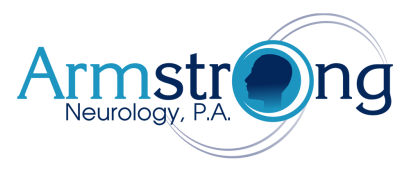Myopathy
Myopathy is a term used to describe disorders of the muscle. There are a number of conditions that affect the muscle. Myopathies typically present with weakness of the proximal muscles such as the shoulders and hips. Some present with easy fatigue. Patients may complain of difficulty climbing stairs or fixing their hair in the morning.
These disorder can be due to genetic disorders, inflammatory disorders and metabolic disorders among others. This is a list of some of the most commonly encountered disorders.
Myopathy is a term used to describe disorders of the muscle. There are a number of conditions that affect the muscle. Myopathies typically present with weakness of the proximal muscles such as the shoulders and hips. Some present with easy fatigue. Patients may complain of difficulty climbing stairs or fixing their hair in the morning.
These disorder can be due to genetic disorders, inflammatory disorders and metabolic disorders among others. This is a list of some of the most commonly encountered disorders.
|
Tabulation of myopathies:
Congenital myopathies 1. Central core disease 2. Multicore disease 3. Nemaline myopathy 4. Centronuclear (myotubular) myopathy 5. Congenital fiber-type disproportion 6. Fingerprint body myopathy 7. Rigid spine syndrome 8. Reducing body myopathy 9. Sarcotubular myopathy 10. Zebra body myopathy 11. Cytoplasmic body myopathy 12. Cap disease Muscular dystrophies 1. Congenital 2. Fukuyama 3. Cerebro-ocular dysplasia 4. X-linked recessive 5. Pseudohypertrophic muscular dystrophy, severe (Duchenne) 6. Pseudohypertrophic muscular dystrophy, mild (Becker) 7. Emery-Dreifuss 8. Facioscapulohumeral 9. Limb-girdle syndrome 10. Scapulohumeral (Erb) 11. Childhood onset with recessive inheritance 12. Late onset with dominant inheritance 13. Quadriceps myopathy 14. Distal myopathy 15. Dominant inheritance: i. Welander ii. Non-Scandinavian 16. Recessive inheritance 17. Ocular myopathy 18. Oculopharyngeal myopathy Myotonic disorders 1. Myotonic dystrophy 2. Myotonia Glycopyrolate 3. Chondrodystrophic myotonia (Schwartz-Jampel) 4. Paramyotonia congenital Carbohydrate storage diseases 1. Acid maltase deficiency (Pompe) 2. Debrancher deficiency (Forbes) 3. Brancher deficiency (Anderson) 4. Phosphorylase deficiency (McArdle) 5. Phosphofructokinase deficiency (Tarui) 6. Phosphoglycerate kinase deficiency 7. Phosphoglycerate mutase deficiency 8. Lactic dehydrogenase deficiency 9. Polyglucosan storage (Lafora) Lipid storage diseases 1. Carnitine deficiency 2. Carnitine palmitoyltransferase deficiency 3. Acyl-CoA dehydrogenase deficiencies 4. Chanarai's disease 5. Batten's disease 6. Fabry's disease Mitochondrial myopathies Primary: Defective energy conservation Impaired substrate utilization Respiratory chain defects Secondary: Ischemia Thyroid disease Glycogen storage disease Drug-induced |
Endocrine myopathies 1. Acromegaly 2. Thyrotoxicosis 3. Myxedema 4. Cushing’s disease 5. Exogenous steroid 6. Hyperparathyroidism 7. Hypoparathyroidism Miscellaneous metabolic myopathies 1. Alcohol-related disorders 2. Malnutrition 3. Chronic renal disease 4. Amyloidosis 5. Malignant hyperthermia 6. Myoadenylate deaminase deficiency Periodic paralysis 1. Hypokalemic 2. Hyperkalemic 3. Normokalemic 4. Thyrotoxic Paraneoplastic disorders 1. Motor neuron disease 2. Radiculopathy/neuropathy 3. Myasthenic syndrome 4. Distal axon (twig) disease 5. Inflammatory myopathies (polymyositis, dermatomyositis) 6. Embolic Toxic myopathies 1. Alcohol 2. Iron 3. Chloroquine 4. Clofibrate 5. Glycoprotein 6. EACA 7. Emetine 8. d-Penicillamine 9. Pentazocine 10. Vincristine Inflammatory myopathies 1. Infections 2. Bacterial 3. Fungal 4. Viral 5. Parasitic 6. Immune-mediated 7. Polymyositis 8. Dermatomyositis 9. Inclusion body myositis 10. Myopathy in systemic connective tissue disease 11. Eosinophilic fasciitis 12. Polymyalgia rheumatica 13. Sarcoidosis 14. Idiopathic granulomatous myositis 15. Drug-induced myopathies 16. Eosinophilia myalgia syndrome (L-tryptophan myopathy) |
Diagnosis:
The diagnosis of most myopathies involves a combination of laboratory studies and nerve conduction studies with specific testing of the muscles. In most cases it is necessary to perform a muscle biopsy. This is a very simple and minor outpatient procedure in which a small sample of a part of a muscle is removed from a small incision and subsequently analyzed by the pathologist. The treatment will vary depending on the underlying cause of the myopathy.
|
Hypokalemic periodic paralysis: |
|
|
Myotonic Dystrophy: |
|

